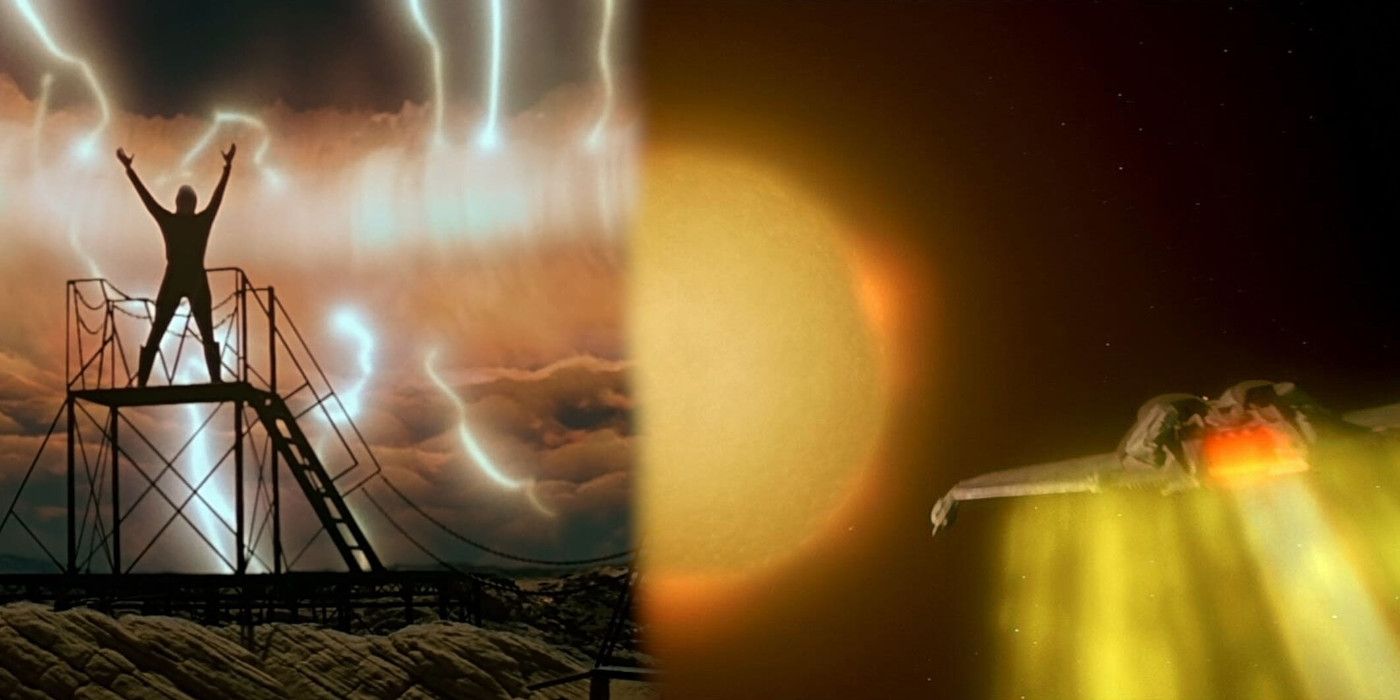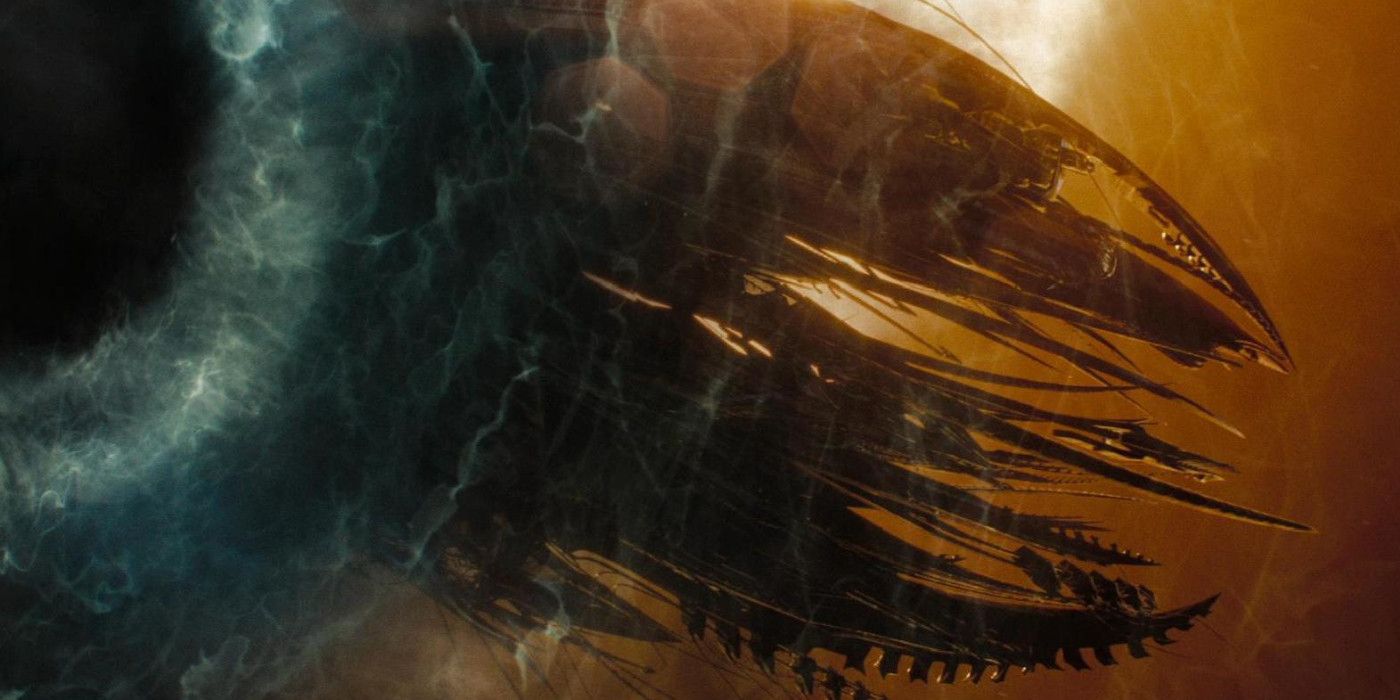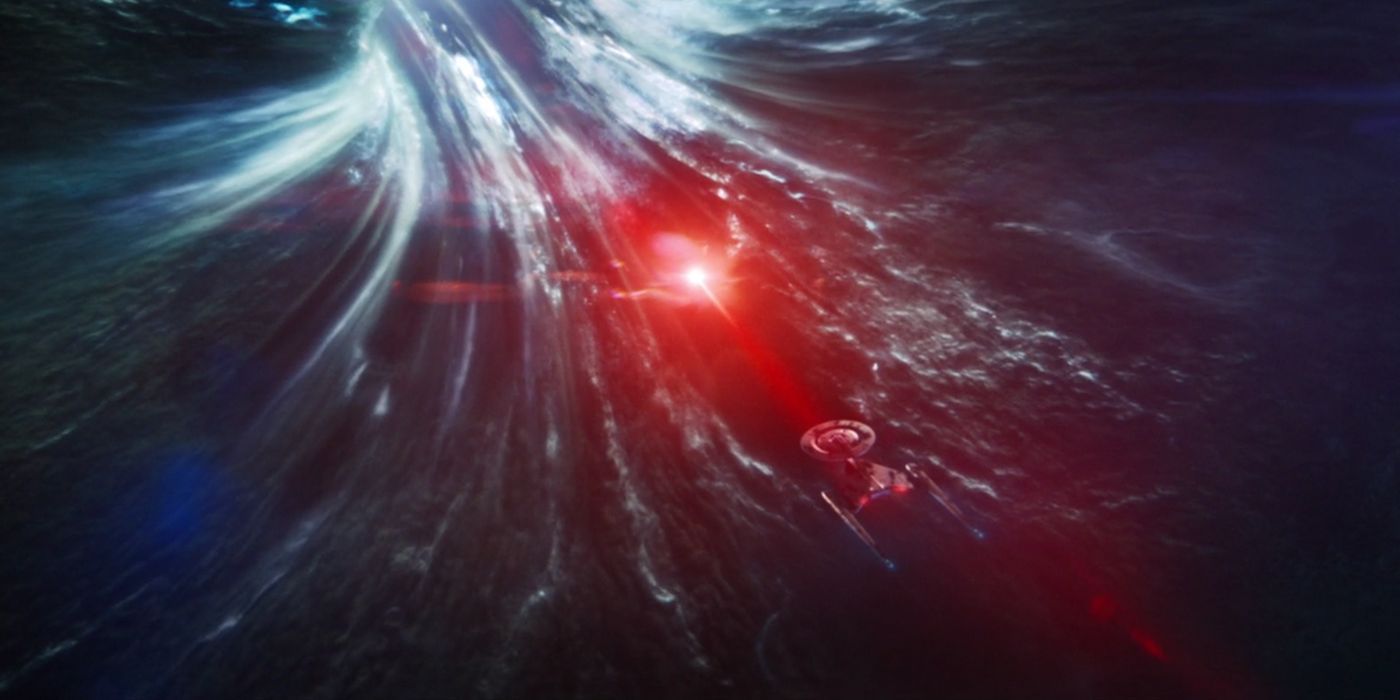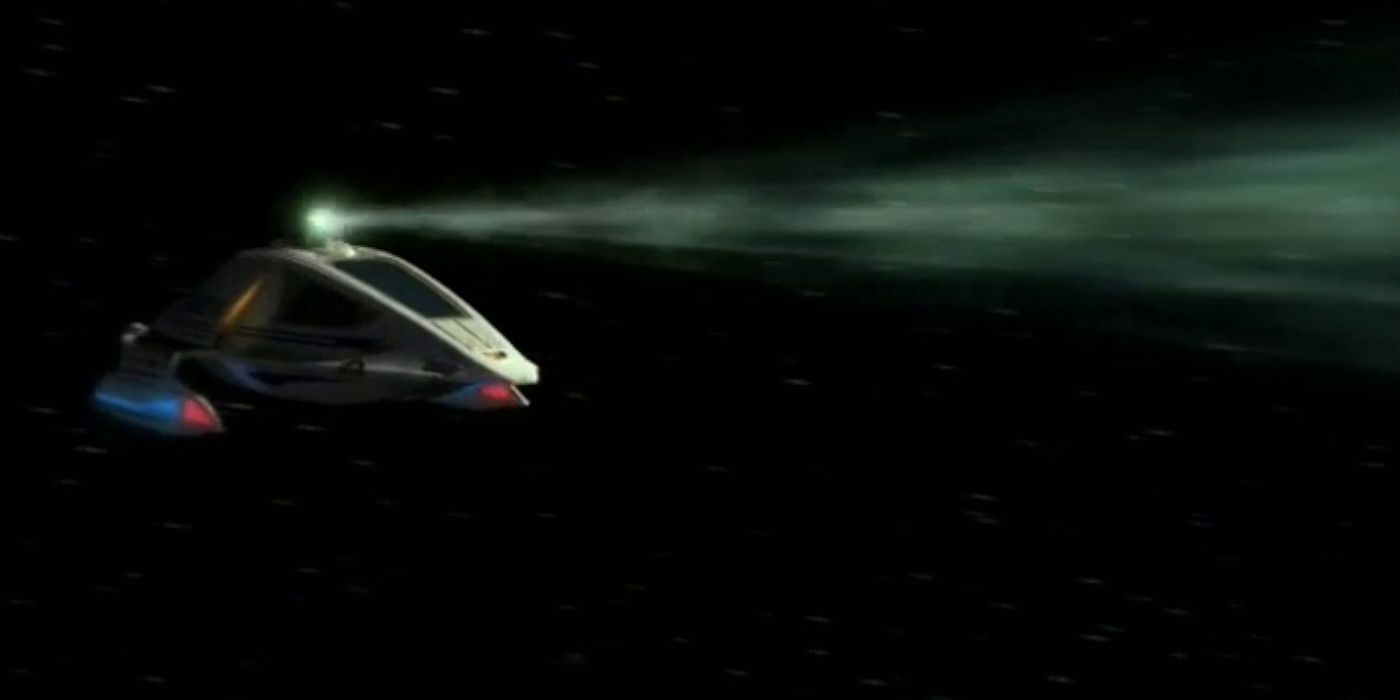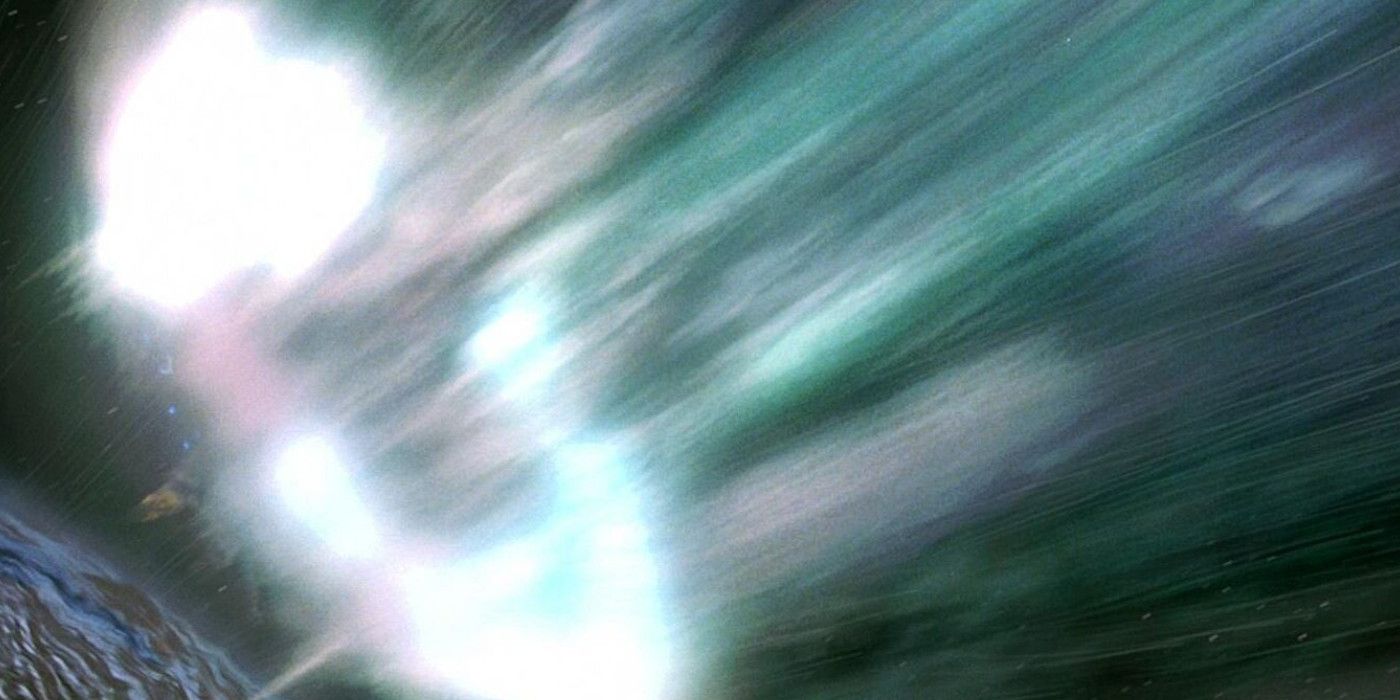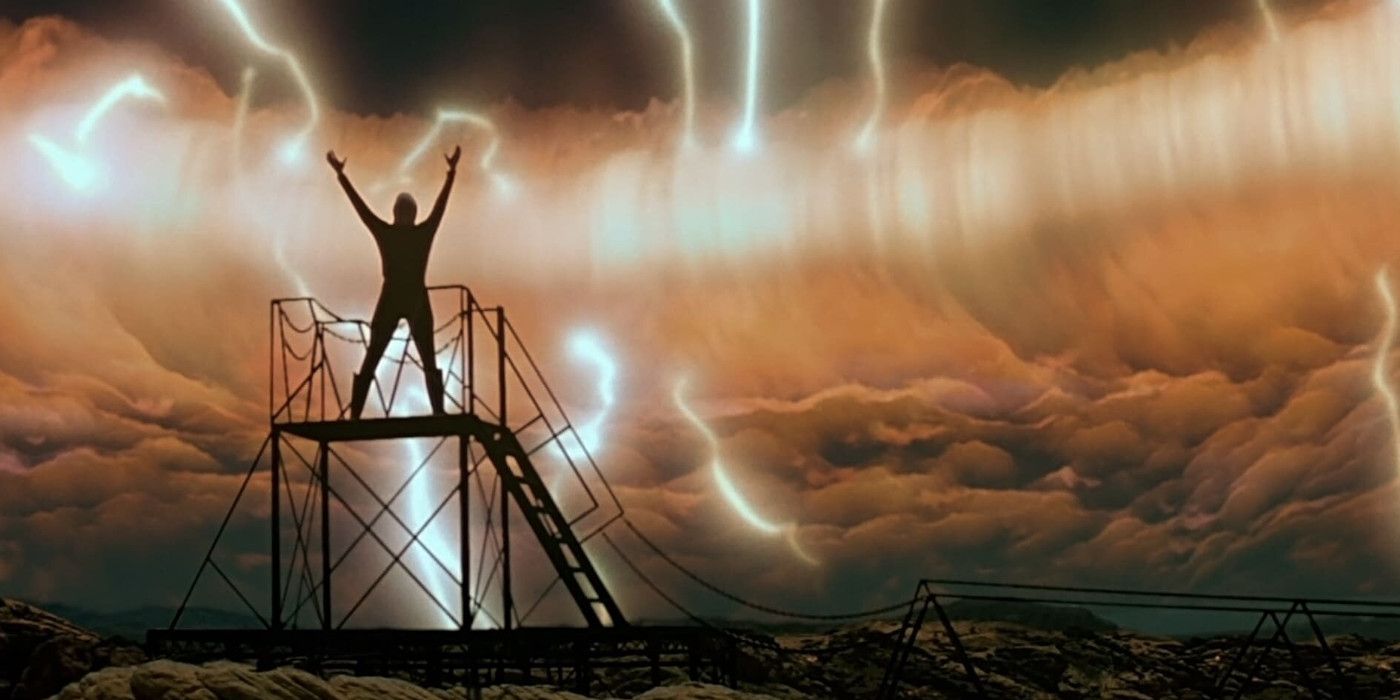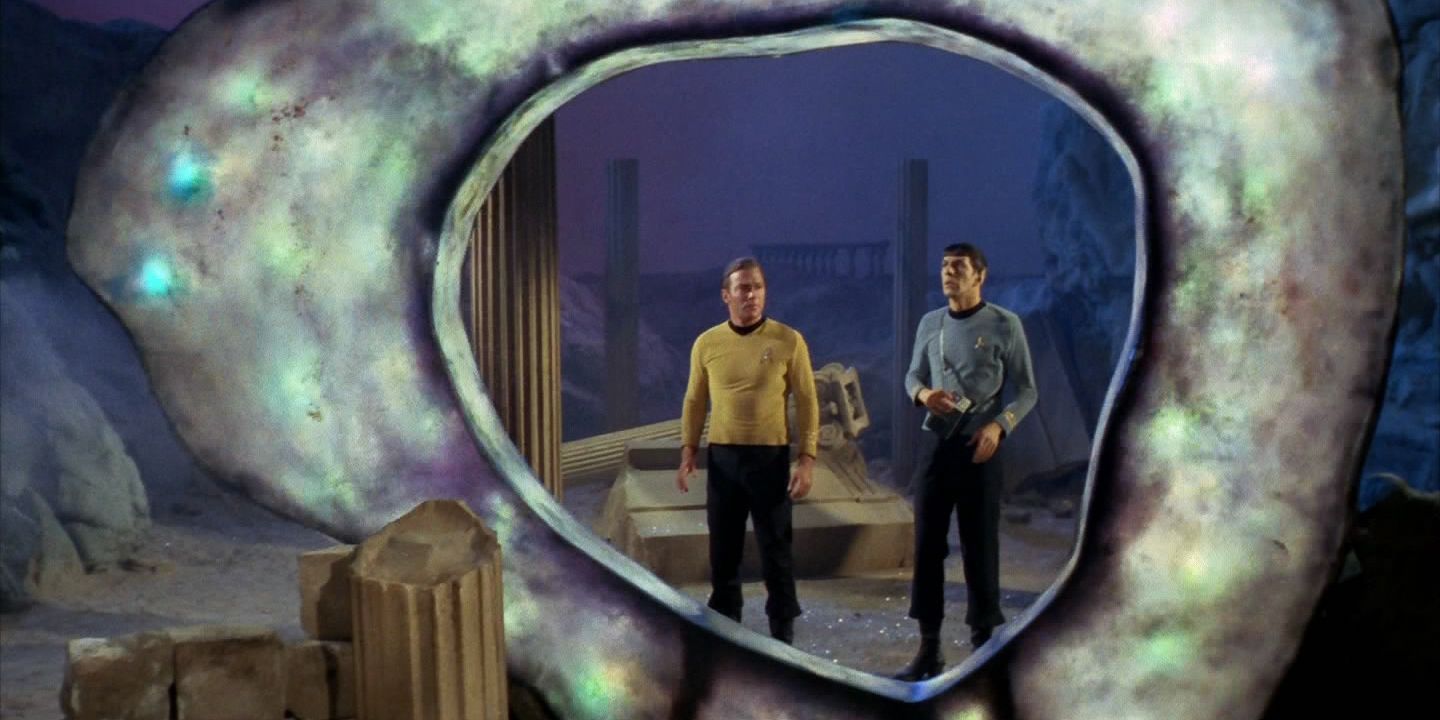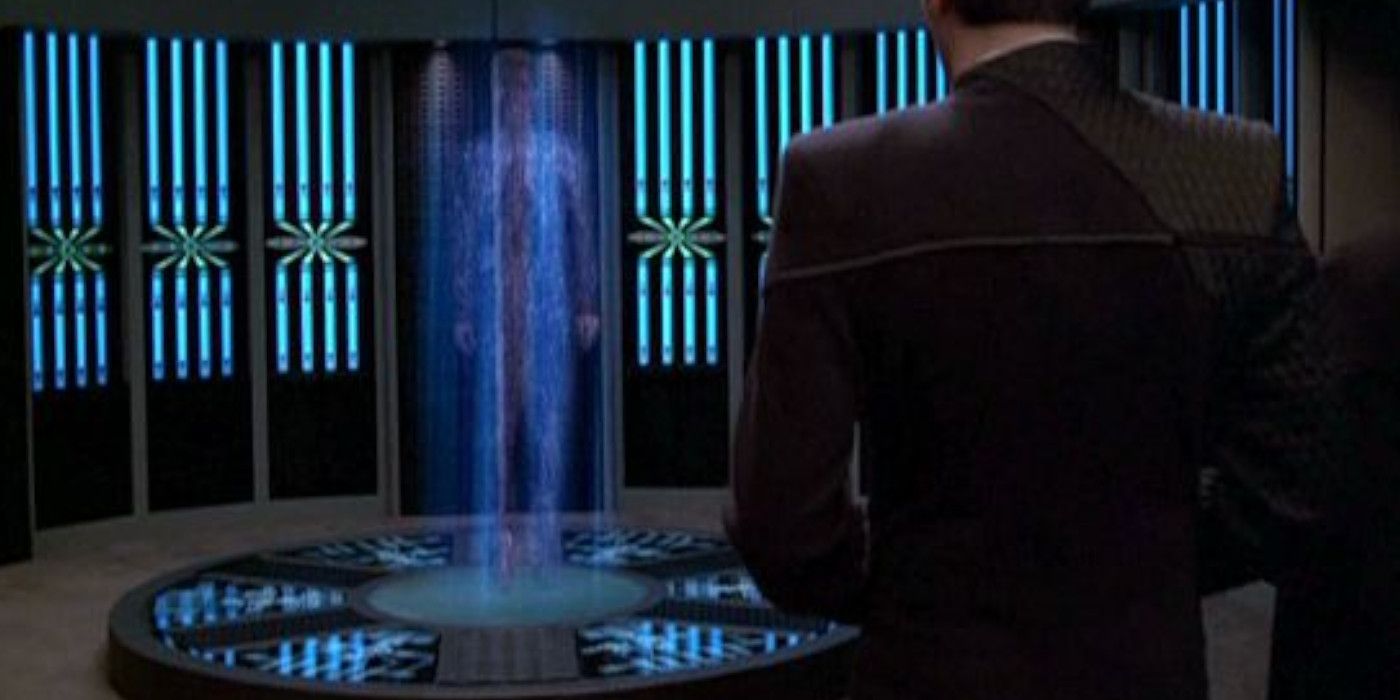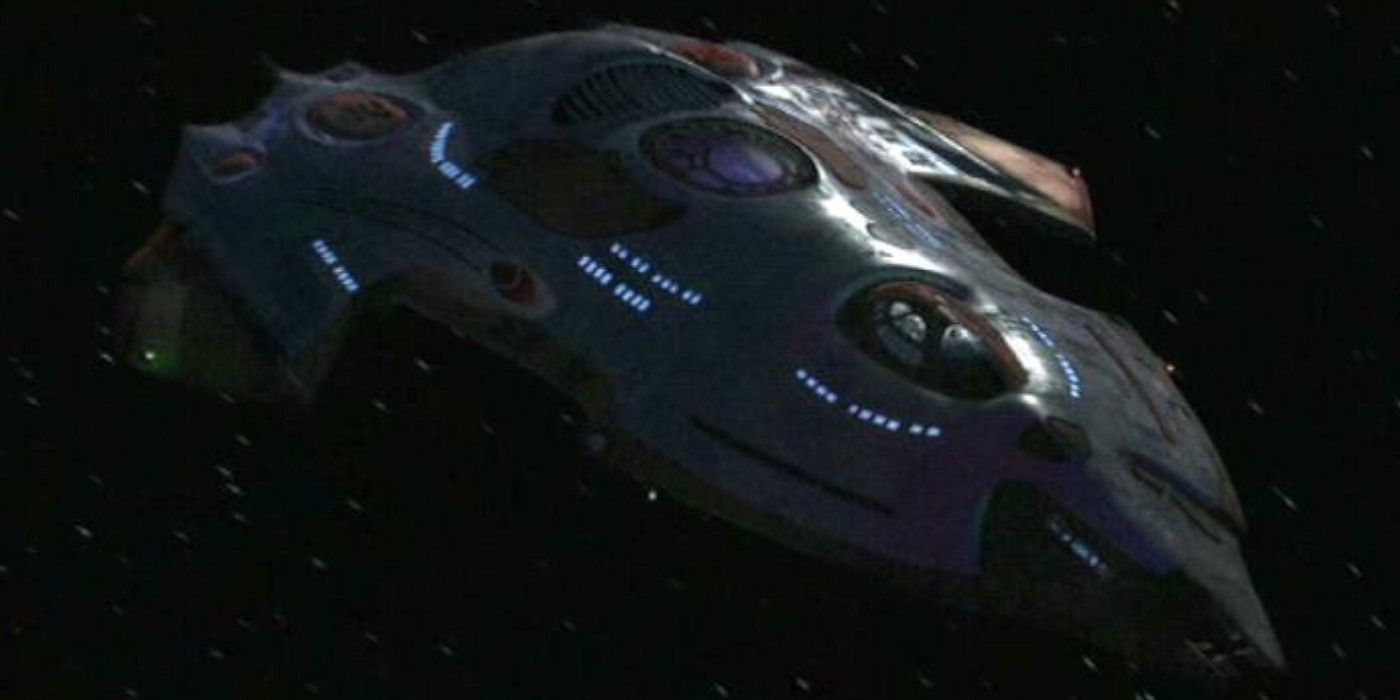Time travel has been an essential part of the Star Trek franchise since the very first season of Star Trek: The Original Series. When the trailers for Star Trek: Picard began, fans noticed that Picard and his crew will be traveling back in time to save their future.
Since almost every show has incorporated time travel in some way, with the exception of Star Trek: Lower Decks so far, there have been multiple ways for crews to travel to the past or future, with some being better than others.
Blackhole Created By Red Matter
When J.J. Abrams rebooted the franchise with Star Trek, one of the best Star Trek films, in 2009, he chose a path that would set it apart from what had come before and keep it from interfering with established canon. Prior to the events of the film, a massive star exploded, which sent a shockwave that threatened the entire quadrant. Romulus, the Romulan homeworld, was destroyed before Spock could use Red Matter to create a black hole to suck in all the energy, but it had an unintended side effect.
When Nero, a Romulan, and his ship were caught in the wake of the black hole, they were sent back in time to the year 2233. Since a blackhole's primary function is not time travel, this method is very dangerous and unclear what the destination time will be. There is also no way to return to one's home time period with the use of this method.
Red Angel Suit
The second season of Star Trek: Discovery, one of the more popular Star Trek shows, revolved around the mystery of who or what the Red Angel was. Turns out, it was a suit that allowed its wearer to travel through time, worn by Michael's mother, Dr. Gabrielle Burnham, and then later by Michael herself. Dr. Burnham was attempting to stop an AI system called Control from destroying the galaxy, and Michael used it to send herself and Discovery to the 32nd Century.
While the red angel suit was an engineering marvel, once one was in the future, they could only return to the past for a short period of time before they were forcefully shot back to the future. The suit was also powered by time crystals, which was an unstable and unpredictable crystal from a sacred Klingon world named Boreth.
Chrono Deflector
In order to return to the past to save her crew and alter the timeline, Admiral Janeway found a Klingon scientist who created a Chrono Deflector. Since the Temporal Prime Directive forbids intentional time travel, the Federation tried to stop Janeway, but they were too late. She returned to the past and helped Voyager return home many years before they would have.
Only seen in the events of the beginning of Star Trek: Voyager's finale, "Endgame," the Chrono Deflector seems like a relatively easy way to travel through time. The user is able to set the exact time and space they want to end up in. The problem is that it uses so much energy that it burns out and makes a return trip impossible.
Temporal Vortex
When Data's head was discovered at an abandoned mine on Earth in the 24th Century, Picard and the Enterprise went to investigate. Turns out a species known as the Devidians had been using a Temporal Vortex to travel back to Earth in the 1800s to steal life energy from people. The Enterprise crew went in to stop them.
The Temporal Vortex was an artificially created rift in the fabric of space-time. Once the rift was opened, it could not be moved, but it allowed travel from one point in space and time to another point. This is also the method that the Borg used when they traveled to 2063 to assimilate Earth. While the rift can be stable, it only allows travel to one point in time and back.
Nexus
On a mission to save some El-Aurian refugees, Captain Kirk was lost to an energy ribbon called the Nexus. In the 24th century, Picard is trying to stop an El-Aurian scientist from destroying a star that will alter the Nexus' path so that the scientist can be swept up in it, in one of the many things that do not make sense in Star Trek: Generations.
The Nexus is a paradise dimension where people can live out their perfect lives. The only problem is that any ship that gets too close will be destroyed, so one has to hope it flies through a planet. Once in the Nexus, it is apparently pretty easy to escape. Since time has no meaning inside, one can leave the Nexus at any point in history.
Slingshot Effect
The Star Trek: The Original Series episode "Tomorrow is Yesterday" sees Kirk and his crew accidentally using this method to travel to the mid-20th century. They would use it again in Star Trek IV: The Voyage Home to travel to the late 20th century to retrieve a pair of humpback whales. This is also the method that Star Trek: Picard appears to use in season 2.
This method is extremely tricky. It involves traveling at a high warp towards a star and allowing gravity to increase the speed of the vessel. After the right coordinates are hit, the vessel has to break away, and the whiplash effect will throw the vessel into a time warp. In order to hit the desired time and place, the calculation has to be precise, but it will get one where they need to go and back.
Orb Of Time
There were many Orbs introduced in Star Trek: Deep Space Nine that the Bajorans could use to pray to beings, and one orb sent the Defiant back in time to the 23rd Century. In one of the best Star Trek: Deep Space Nine episodes, "Trials and Tribble-ations," they had to stop a Klingon spy from killing Captain Kirk with an explosive Tribble.
While the exact way to use the Orb was never given to audiences, it appears to be a very effective way to travel through time. Since changing history is against the Temporal Prime Directive, the Orb was rarely used. However, it allows one to pick an exact time and place, and it will transport them there and back without any problems.
The Guardian Of Forever
First introduced in the landmark episode "The City on the Edge of Forever," the Guardian of Forever was a sentient time portal that Kirk and his crew discovered on an ancient world. The Guardian helped send Kirk and Spock back through time in order to fix the damage done by McCoy. In the 32nd Century, the Guardian helped Philippa Georgiou when he was hiding and going by Carl.
It is stated in Star Trek: Discovery that during the Temporal Wars, factions were trying to use the Guardian, so he went into hiding. In his first appearance, travel through him was possible but tricky considering one could not pick an exact date to arrive in. However, he would be able to bring them back just as easily as he could send them there. It would appear that by the time of the 32nd Century, picking a point in time was not as difficult.
Temporal Transporter
By the time of the 29th Century, the Federation had time travel technology that they used to protect the timeline all the way through to the Temporal Cold War of the 31st Century. This piece of technology was introduced in Star Trek: Voyager. The Federation Timeship Relativity was equipped with a Temporal Transporter that they used to help Seven of Nine transport to the past to stop the destruction of Voyager.
This technology was extremely precise, able to lock onto a moment in time and transport them just as easily as the regular Federation transporters. There was a slight problem, though, in that multiple uses could cause serious side effects, such as temporal psychosis. This would affect the traveler's mental state and could lead to their death.
Timeships
While the Federation had dedicated timeships as early as the 26th Century, it was not until the 29th Century that they became as common as space exploratory vessels. While many timeships have been shown in Star Trek, a prominent one was in Star Trek: Voyager when one tried to destroy Voyager because it wrongly thought Voyager would lead to catastrophe in the future.
These ships required very skilled pilots since the slightest miscalculations could cause a temporal explosion. However, they were by far one of the most reliable forms of time travel. These ships were capable of traveling through time in the same way that starships could travel through space.

